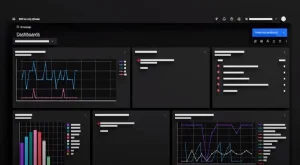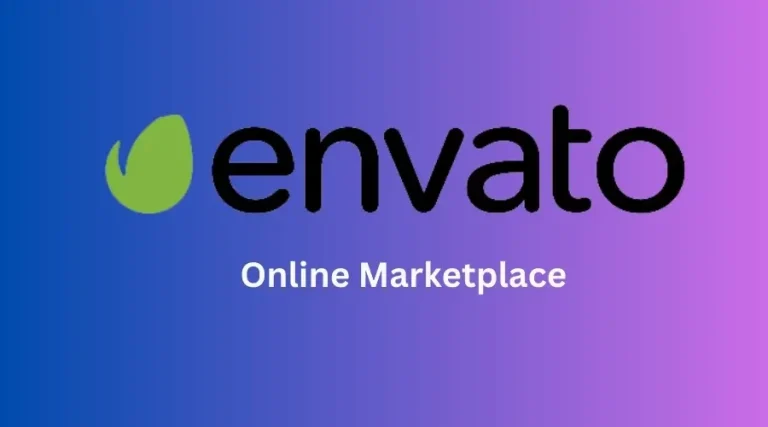Some of the best SIEM tools for small businesses include SolarWinds Security Event Manager and Splunk. ManageEngine Log360 is another top contender for efficient security information and event management.
For small businesses, digital security holds immense significance, and selecting the right Security Information and Event Management (SIEM) tool can be a game-changer. An ideal SIEM tool offers real-time visibility into an organization’s IT security, providing businesses with the means to detect, analyze, and respond to potential security threats swiftly.
Small businesses require cost-effective, user-friendly solutions that can scale with their growth while ensuring compliance with various regulations. The market is replete with options tailored to meet these needs, promising a blend of robust features and simplicity.
Deploying a SIEM tool equips small enterprises with the cybersecurity resilience typically reserved for larger organizations, making it a critical investment in their technological infrastructure.
Criteria For Selecting Siem Tools
Selecting the right Security Information and Event Management (SIEM) tool for a small business involves taking multiple factors into account. Cost considerations for small businesses often drive decisions, but it’s crucial to find a balance between affordability and effectiveness.
A perfectly chosen SIEM can be the cornerstone of your cybersecurity infrastructure, ensuring proactive threat detection and efficient response to a multitude of security incidents. Below are key criteria to consider to ensure you select a SIEM tool that fits both your security needs and budget.
Affordability
Cost considerations for small businesses are significant when selecting a SIEM tool. Unlike larger corporations, small businesses typically operate on tighter budgets and need to maximize every dollar spent. While affordability should not compromise critical features, it is vital to choose a SIEM solution that provides the most value for the investment. Factor in not just the purchasing cost, but also the long-term expenses such as maintenance, upgrades, and additional module costs.
Ease Of Use
The effectiveness of a SIEM tool correlates with its usability. Small businesses often have limited IT staff, and a SIEM tool that is complex to operate can lead to operational inefficiencies—or worse, gaps in security monitoring. Selecting a user-friendly interface with intuitive dashboards and automated reporting can empower your team to stay ahead of threats with minimal training.
Integration Capabilities
Today’s digital ecosystems are interconnected. A SIEM that easily integrates with existing infrastructure, such as firewalls, intrusion detection systems, and other security tools, is a pivotal piece of the puzzle. This avoids information silos, allowing for automated collation and analysis of data from diverse sources, and providing a unified view of security events.
Scalability
Small businesses grow, and so do their security needs. A SIEM tool must be able to scale with your business without requiring a complete system overhaul. Look for options that accommodate increasing amounts of data, more complex compliance requirements, and a growing network of devices.
Threat Detection And Response Capabilities
The core function of SIEM is to rapidly detect and respond to threats before they cause harm. A competent SIEM tool combines advanced analytics, real-time monitoring, and intelligent alerting systems to identify and mitigate security incidents quickly. Ensure your SIEM solution is equipped with these capabilities to maintain vigorous defense mechanisms for your business’s critical assets.
Read also: 10 Best Free Ai Tools To Grow Your Business
Top SIEM Tools For Small Business
In an age where cybersecurity threats are constantly evolving, small businesses must arm themselves with effective tools to monitor, analyze, and respond to potential security incidents. Security Information and Event Management (SIEM) tools provide a comprehensive solution for these needs. They aggregate data from various sources, analyze that data to identify abnormal patterns or potential threats, and help streamline incident response. A right SIEM tool can be a game-changer for small businesses seeking to bolster their cybersecurity framework. Let’s explore some of the top SIEM tools tailored to meet the unique needs of small businesses.
Solarwinds Security Event Manager
SolarWinds Security Event Manager is renowned for its simplicity and efficiency, making it a compelling choice for small businesses. Features such as:
- Automated threat detection to quickly identify malicious activity,
- Compliance reporting to simplify adherence to industry regulations,
- Real-time event correlation for instant insights into security threats,
make this tool a strong contender for businesses that need a robust security solution without a steep learning curve.
Logrhythm
LogRhythm stands as a user-friendly platform offering end-to-end threat monitoring. Small businesses benefit from features like:
- Log management for centralizing data,
- Advanced analytics to detect behavioral anomalies,
- Case management features that allow for effective incident resolution.
Its tailored solutions ensure that businesses of all sizes have access to enterprise-level security measures.
Splunk
Splunk offers a powerful platform that not only serves as a SIEM tool but extends its capabilities to IT operations and business analytics. With Splunk, small businesses can:
- Gain visibility into their data across the entire organization,
- Utilize advanced search capabilities to investigate and diagnose threats,
- Leverage AI and machine learning for predictive analytics and threat forecasting.
This multifunctional tool often surfaces during discussions around “Splunkt is the most popular SIEM tool?” due to its diverse applications and scalability.
Ibm Qradar
IBM QRadar offers a solution that integrates previously siloed functions into a cohesive security ecosystem. Small businesses can expect:
- Sophisticated analytics tailored to uncover hidden threats,
- Seamless data integration from various sources for a comprehensive overview,
- Real-time threat detection and incident prioritization to enhance response efforts.
This tool empowers small businesses to take a proactive approach to cybersecurity.
Alienvault Usm
AlienVault USM (Unified Security Management) provides a unified platform for threat detection, incident response, and compliance management. It stands out for small businesses due to:
- Its all-in-one approach that simplifies security management,
- Built-in threat intelligence to keep defenses up-to-date,
- Cloud-based deployment options that offer scalability and ease of implementation.
For small businesses looking for a comprehensive security solution without the complexity, AlienVault USM is an excellent option.
Key Features And Benefits Of Each SIEM Tool
Security Information and Event Management (SIEM) tools are vital assets for small businesses aiming to enhance their security posture. By integrating these powerful solutions, companies can gain real-time visibility into their security systems, streamline compliance reporting, and swiftly react to potential threats. Each SIEM tool comes with a unique set of key features and benefits tailored to different operational needs. Let’s delve into some of the top SIEM tools available and uncover the distinct advantages they offer to small businesses.
Solarwinds Security Event Manager
SolarWinds Security Event Manager is designed to provide a streamlined and user-friendly approach to SIEM. Key features and benefits of this tool include:
- Real-time event correlation: Quickly identifies and correlates malicious activity across your network.
- Compliance-ready reports: Simplifies compliance with built-in templates for HIPAA, PCI DSS, and more.
- Automated threat response: Automatically responds to threats by taking predefined actions to remediate incidents.
- Log forensics: Allows you to investigate and troubleshoot past security events with ease.
Logrhythm
LogRhythm goes beyond traditional SIEM by offering an integrated platform that combines SIEM with log management, network and endpoint monitoring, and other security features:
- Advanced analytics: Utilizes machine learning to detect anomalies and behavioral patterns indicative of security threats.
- Case management: Streamlines the entire lifecycle of incident management and collaborative investigations.
- Centralized log management: Gathers and analyzes diverse log data in a unified platform for improved visibility.
- User and entity behavior analytics (UEBA): Monitors and analyzes user behavior to identify potentially risky activity.
Splunk
Splunk stands out with its robust data analytics capabilities and scalability. Small businesses can benefit from:
- Extensive data ingestion: Ingests and indexes large volumes of data from various sources for deep insights.
- Flexible dashboards: Offers customizable dashboards to monitor data and security trends effectively.
- Scalability: Seamlessly scales to meet the growing data needs of small businesses.
- Active community: A vast community of users and experts contribute to a rich resource of knowledge and support.
Ibm Qradar
IBM QRadar is praised for its advanced SIEM features that cater to more established small business security environments:
- Intelligent offense detection: Identifies threats by correlating data from logs, flows, and vulnerability information.
- Network behavior analytics: Detects abnormal network activity that could indicate threats.
- High-quality threat intelligence: Integrates with various threat intelligence feeds for up-to-date threat data.
- Customizable reporting: Enables you to create tailored reports that match specific organizational requirements.
Alienvault Usm
AlienVault Unified Security Management (USM) is particularly suitable for small businesses looking for a comprehensive security solution on a budget:
- All-in-one platform: Combines SIEM, intrusion detection, vulnerability scanning, and more into a single platform.
- Fast deployment: Quick and easy to deploy, allowing businesses to jumpstart their security measures with minimal setup.
- AlienVault Labs Threat Intelligence: Providing continuous updates from an expert team of security researchers.
- Integrated ticketing: Simplifies incident response with built-in ticketing for managing and tracking issues.
Implementation Tips For Small Businesses
When it comes to securing the digital assets of a small business, implementing a Security Information and Event Management (SIEM) tool can be a game-changer. Small businesses face unique challenges in cybersecurity, often working with limited resources and staff. However, the right approach to SIEM deployment can lead to big rewards in terms of enhanced security posture and compliance. In this section, we will walk through essential implementation tips that can help small businesses effectively deploy SIEM systems and maximize their investment.
Step-by-step Guide For Implementing A Siem Tool
- Evaluate Your Needs: Begin by assessing your specific security requirements. Understand your assets, potential threats, and compliance obligations.
- Select the Right SIEM: Choose a SIEM solution that aligns with your business size, budget, and security goals. Look for scalability and ease-of-use.
- Plan the Deployment: Develop a deployment plan, detailing the rollout stages, responsible personnel, and timeline.
- Configure and Integrate: Set up the SIEM tool to capture data from your specific network sources. Integration with existing systems is crucial for comprehensive visibility.
- Define Policies and Rules: Establish what constitutes normal and abnormal behavior in your network to allow the SIEM to effectively identify anomalies.
- Train Your Team: Educate your staff about the new SIEM tool, particularly those who will operate and manage it. Training ensures efficient use and quick response to incidents.
- Test and Optimize: Test the system to validate configurations, ensuring it’s operating as intended. Continuously adjust parameters to refine performance.
- Review and Maintain: Regularly review the effectiveness of your SIEM system. Schedule maintenance to update software and keep up with evolving threats.
Best Practices For Maximizing The Benefits
- Continuous Monitoring: Keep your SIEM running constantly to ensure ongoing awareness of your security status. Immediate detection of threats is essential.
- Alert Prioritization: Not all alerts signal a major threat. Prioritize them based on potential impact to avoid alert fatigue and focus on critical issues.
- Regularly Update SIEM Rules: Cyber threats evolve, so must your SIEM’s rules and signatures. Stay current with threat intelligence to maintain defense effectiveness.
- Correlate Data Effectively: SIEM tools are powerful when they correlate data from various sources. Ensure your tool analyzes diverse data points for comprehensive protection.
- Leverage Artificial Intelligence: AI can greatly enhance your SIEM’s capabilities, by automating response and identifying sophisticated patterns indicative of breach attempts.
- Engage in Proactive Incident Response: Establish a clear incident response plan. When an incident is detected, act swiftly to contain and mitigate damage.
For small businesses looking to implement a SIEM tool, taking measured, strategic steps ensures a successful deployment. Begin with a clear understanding of your needs and continue with a commitment to ongoing maintenance and refinement. With these best practices in place, small businesses can significantly enhance their cybersecurity defenses and protect their critical digital infrastructure.
Frequently Asked Questions Of Best Siem Tools For Small Business
Does A Small Business Need A Siem?
A small business needs SIEM to effectively monitor, detect, and respond to cybersecurity threats, ensuring protection for critical data and compliance with regulations.
What Is The Most Popular Siem Tool?
The most popular SIEM tool is Splunk, known for its advanced data analytics and real-time monitoring capabilities.
What Is A Siem For Beginners
A SIEM, or Security Information and Event Management system, combines real-time monitoring and analysis of security alerts across an organization’s IT infrastructure. It helps detect, prevent, and respond to cyber threats effectively.
Do You Need A Soar And A Siem?
Yes, integrating a SOAR with a SIEM provides a more efficient security posture, automating responses and enhancing threat detection and management.
Conclusion
Selecting the right SIEM tool can elevate your small business’s cybersecurity posture significantly. By incorporating one of the top-notch SIEM solutions covered, you effectively safeguard your digital environment. Remember, investing in security is not just necessary; it’s smart business. Protect your assets, data, and peace of mind with a SIEM system that suits your operations perfectly.





